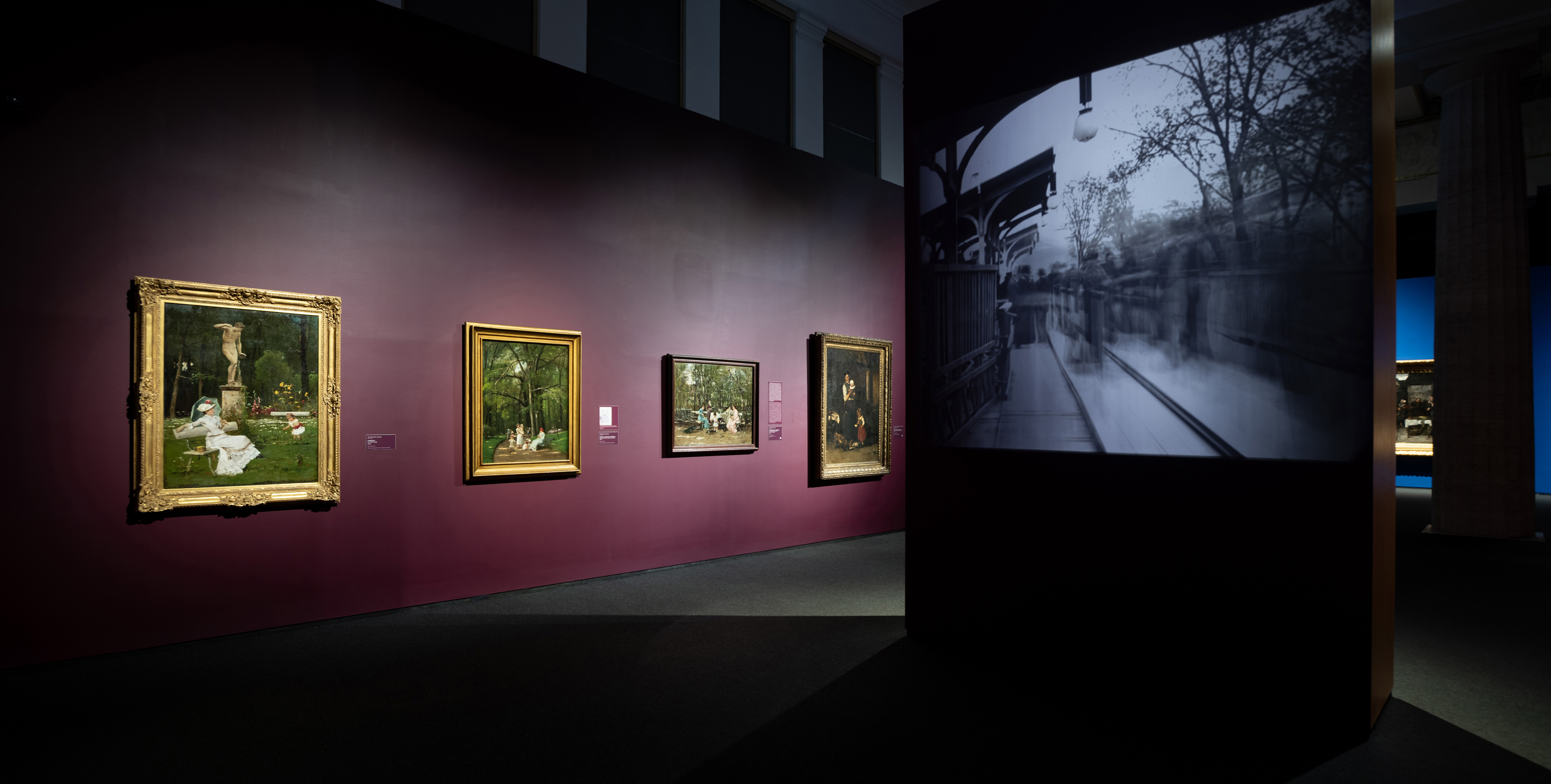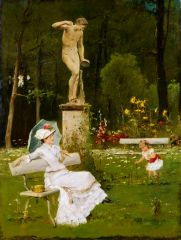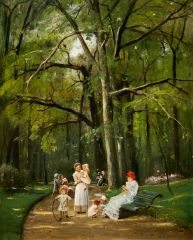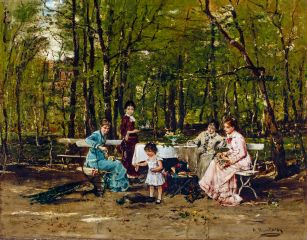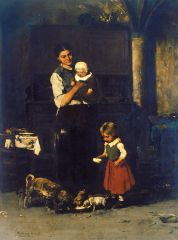In the second half of the nineteenth century, Paris was a bustling, cosmopolitan capital and a mecca for the arts. The painters and sculptors who flocked there from all corners of the world vied for recognition on the Parisian cultural scene. The young Munkácsy was helped initially by his patron, Baron Édouard de Marches of Luxembourg, and his wife. In 1874, after the baron's death, Munkácsy married his widow, Cécile Papier, whose rank and fortune contributed to the advancement of his social standing.
Munkácsy was nevertheless a truly self-made man who achieved distinction through his own efforts and in his own right: by the end of the 1870s, he had become an established artist, feted and honoured by French critics and the Paris salon. His newest masterpiece, Milton, was awarded an honorary gold medal at the 1878 Paris World Exposition, and further recognitions followed, for example, when he was elevated to the ranks of the nobility by Emperor Franz Joseph. It was then that Munkácsy signed a ten-year contract with the art dealer Charles Sedelmeyer, who steered his career in a new direction, towards unprecedented wealth and world renown. From the late 1870s, Munkácsy's subject matter and approach changed. His dark-toned folk genre scenes were replaced by the rich colours and exciting textures of salon genre paintings depicting the world of the upper middle class. The two compositions Two Families clearly illustrate this shift. The haute-bourgeois scene once hung in the most opulent private gallery in New York, the million-dollar collection of William Vanderbilt. Another important private collection in New York acquired Peacocks, the first of Munkácsy's outdoor “salon paintings”, now being shown for the first time in Hungary.
With his newly acquired financial and social position, Munkácsy was able to have a sumptuous palace built for himself in the most distinguished quarter of Paris. The city became a new motif in his work: he produced several paintings of his new surroundings, the area around Parc Monceau.
 Munkácsy
Munkácsy
